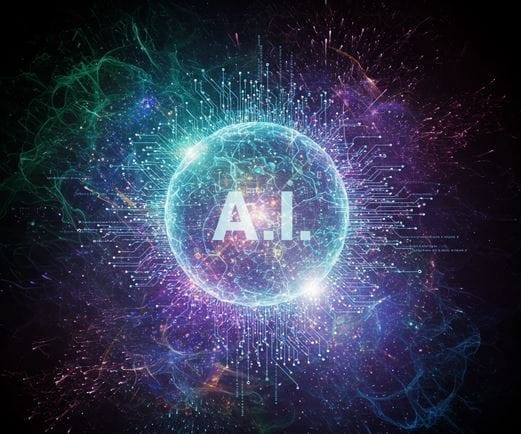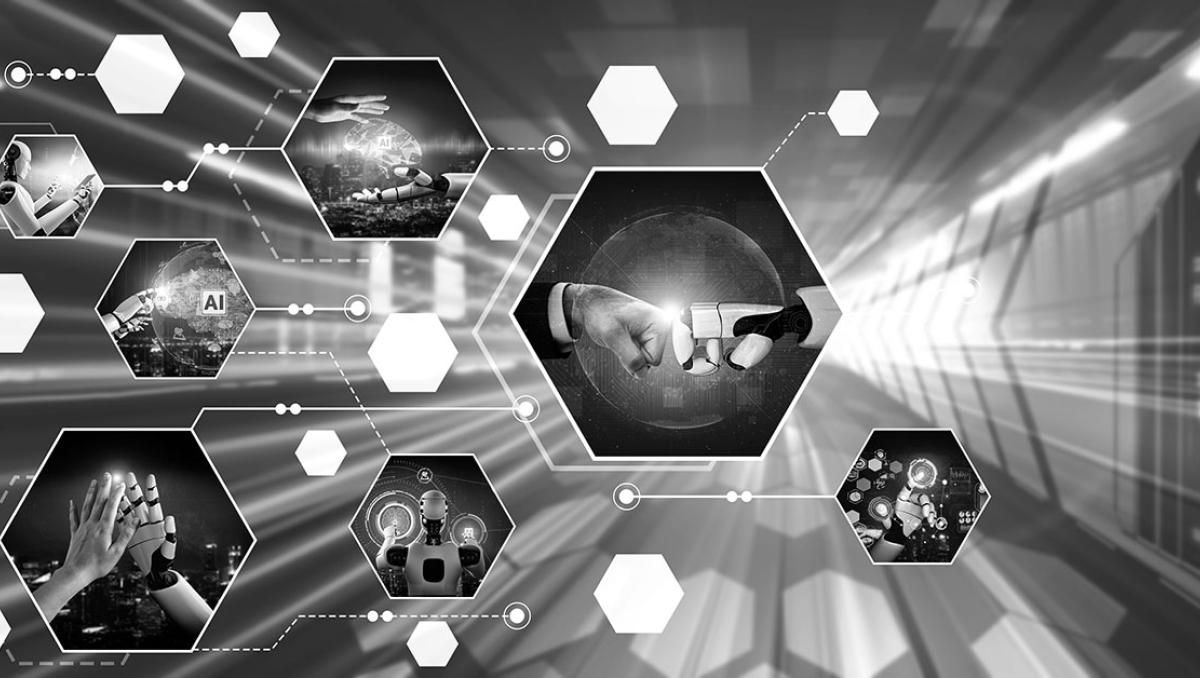- The CyberLens Newsletter
- Posts
- The Human Factor in Cybersecurity
The Human Factor in Cybersecurity
Understanding Unintentional Breaches and Advanced AI Mitigation Strategies
Find out why 1M+ professionals read Superhuman AI daily.
In 2 years you will be working for AI
Or an AI will be working for you
Here's how you can future-proof yourself:
Join the Superhuman AI newsletter – read by 1M+ people at top companies
Master AI tools, tutorials, and news in just 3 minutes a day
Become 10X more productive using AI
Join 1,000,000+ pros at companies like Google, Meta, and Amazon that are using AI to get ahead.

Interesting Tech Fact:
Did you know? The first AI-driven cybersecurity defense system deployed by DARPA (the Defense Advanced Research Projects Agency) in 2016 could autonomously patch zero-day vulnerabilities in real time—without human intervention. Though not widely commercialized, it paved the way for modern adaptive cybersecurity tools now used by major corporations and governments.
Introduction
In a hyper-digitized world where cybersecurity threats are increasingly sophisticated, it's tempting to focus solely on external adversaries and high-tech attack vectors. But what if the biggest cybersecurity risk isn’t always malicious intent—it’s human fallibility? Despite firewalls, zero trust architecture, and AI-powered threat detection, one vulnerable layer remains constant: the human element. And it continues to wreak havoc in enterprises large and small.
A recent legal battle highlights this all too well: The Clorox Company has filed a lawsuit against the global IT services firm Cognizant, blaming a cybersecurity breach that crippled its operations on a preventable human error. The breach, allegedly caused by a misstep in system administration, led to widespread outages in Clorox’s supply chain systems, forcing manual processing, delaying deliveries, and prompting revenue losses that spiraled into the hundreds of millions. This case isn’t just about Clorox and Cognizant—it’s a cautionary tale for every organization depending on digital infrastructure and human operators.

The Psychology of Human Error in Cybersecurity
Humans are naturally imperfect, prone to cognitive overload, fatigue, and distraction. Cybersecurity incidents caused by employees—whether through negligence, misconfiguration, or social engineering—account for more than 80% of breaches, according to recent data from Verizon’s Data Breach Investigations Report. What’s more, these errors often arise not from incompetence but from complexity and system pressure.
Consider the following real-world examples:
A system administrator forgets to revoke privileged access after an employee is terminated.
An overwhelmed DevOps team accidentally exposes an AWS S3 bucket by mis-configuring access permissions.
A junior engineer unknowingly clicks on a phishing email designed to look like a Slack message, compromising the entire corporate network.
These aren’t hypothetical—they’re routine. The human mind is simply not built to navigate the fast, layered complexities of modern IT environments without support.
In Clorox’s case, Cognizant allegedly failed to take proper security measures to prevent credential-based access by threat actors. Reports suggest that the breach could have been mitigated or entirely avoided if better monitoring, least privilege principles, and human error prevention mechanisms were in place. The implications are vast—not only in terms of legal liability but also operational resilience and reputational risk.
Preventing the Unpreventable: Strategies for Human-Centric Breach Mitigation
To mitigate human-induced breaches, organizations must adopt a proactive and layered defense strategy that combines culture, policy, and technology.
1. Psychological and Procedural Hardening
User Behavior Analytics (UBA): These systems detect unusual behavior by employees (e.g., logging in from an unusual location or accessing sensitive files outside of normal hours), allowing real-time intervention before damage occurs.
Security Awareness Training: While common, most training programs are outdated or ineffective. Moving toward continuous, gamified, micro-learning approaches improves retention and behavioral change.
Role-Based Access Control (RBAC): Enforce least privilege and dynamic privilege escalation, especially for high-risk roles like system administrators or DevOps engineers.
2. Human-in-the-Loop (HITL) Controls
Not all AI systems can—or should—operate autonomously. HITL cybersecurity systems ensure that any automated decision made by AI (e.g., blocking access or flagging suspicious activity) includes a human verification layer when the action could cause business disruption. This hybrid model mitigates both over reliance on automation and purely manual error.
3. Cognitive Load Reduction
Poorly designed systems increase the chance of human error. Cybersecurity tools must be designed with UX principles that reduce alert fatigue, eliminate redundant actions, and guide users through secure workflows. Integrating cybersecurity into the user experience is as critical as the protection mechanisms themselves.
4. Zero Trust Architecture (ZTA)
While often touted as a silver bullet, ZTA needs to be implemented thoughtfully with human behavior in mind. Incorporating just-in-time access, device posture checks, and contextual access evaluations creates a balance between flexibility and control.
Key Takeaways
Human error accounts for over 80% of cybersecurity breaches.
Legal cases like Clorox vs. Cognizant reflect the rising consequences of such mistakes.
Unknown but effective AI techniques like Explainable AI and Digital Twins can significantly reduce human-induced breach risks.
Security strategies must evolve beyond policy and tools—toward human-centered, AI-enhanced ecosystems.

AI-Powered Prevention: Unknown Yet Powerful Techniques
While AI is now commonplace in threat detection and vulnerability management, several cutting-edge but lesser-known AI techniques offer significant promise in preventing human error-induced breaches.
1. Explainable AI for Behavioral Risk Analysis
Most AI-based systems today work as black boxes, which can lead to distrust or confusion. Explainable AI (XAI) can evaluate patterns in employee behavior and clearly articulate the “why” behind an alert. For example, if an engineer suddenly accesses an archive of outdated customer records, XAI can flag it not just as unusual, but explain that the individual had no business-related justification based on historical patterns.
This transparency enables managers to make better decisions and reinforces trust in AI systems—an essential step toward adoption and effectiveness.
2. AI-Based Automated Misconfiguration Remediation
Misconfigurations are a leading cause of breaches. AI-driven tools can not only detect them but also suggest or automatically implement remediation. For instance, platforms like DeepFactor and Accurics use AI to analyze infrastructure-as-code (IaC) scripts and suggest policy-aligned changes before deployment. Imagine a scenario where an engineer is provisioning cloud infrastructure. The system detects that the network settings inadvertently allow public IP exposure and suggests the correct internal configuration—before the code is pushed live. This real-time AI assistance prevents error before it becomes a risk.
3. Digital Twin Environments for Simulation Testing
AI-enabled digital twins replicate an organization’s IT environment, allowing teams to simulate configurations, user behavior, and potential breaches in a safe, isolated environment. This allows not only red-teaming exercises but also helps staff learn through experiential scenarios—understanding the impact of their actions without consequences.
A Closer Look: Clorox vs. Cognizant – The Human Breach That Cost Millions
In the Clorox lawsuit, the core accusation revolves around Cognizant’s alleged failure to uphold basic cybersecurity hygiene, which ultimately enabled a cyberattack to succeed. But the deeper issue is that Cognizant’s human teams may have mis-configured or poorly managed identity access systems, exposing the organization to credential harvesting by cyber-criminals.
According to early reports, the attack used valid credentials to bypass standard defenses—suggesting a lapse in identity and access management (IAM). Without AI-driven identity threat detection, such attacks can go unnoticed for weeks, sometimes months.
Had an advanced AI system been deployed with advanced behavioral fingerprinting, it could have flagged anomalous access patterns early—such as a credential being used in an unusual geographic location or time. Moreover, if AI-based behavioral reinforcement systems had been in place, it might have prompted Cognizant’s personnel with real-time alerts before an irreversible misstep occurred.
Clorox’s claims—focused on Cognizant’s human error—highlight the growing demand for accountability in an era where downtime equals dollars. It also signals that businesses must go beyond compliance checkboxes and embrace robust AI-human collaboration for security.

Final Thoughts: Strengthening the Human-AI Security Alliance
Cybersecurity is no longer solely a technological problem—it’s a deeply human one. As digital infrastructure continues to scale, the risks introduced by human error will only grow unless mitigated with intelligent design and AI-enabled foresight.
But AI is not a panacea. It must be wielded with care, transparency, and integration into existing workflows. The future of cybersecurity lies in a delicate partnership—where humans understand systems deeply, and AI systems learn from and support those humans without eroding agency or trust.
For companies like Clorox and IT providers like Cognizant, the lesson is clear: when human error is inevitable, the only defense is intelligent augmentation.

Stay ahead with The CyberLens Newsletter — your edge in advanced cybersecurity, AI defense systems, and enterprise risk resilience. Sign up today to receive deep dives like this, real-time breach analysis, and elite industry insights.











